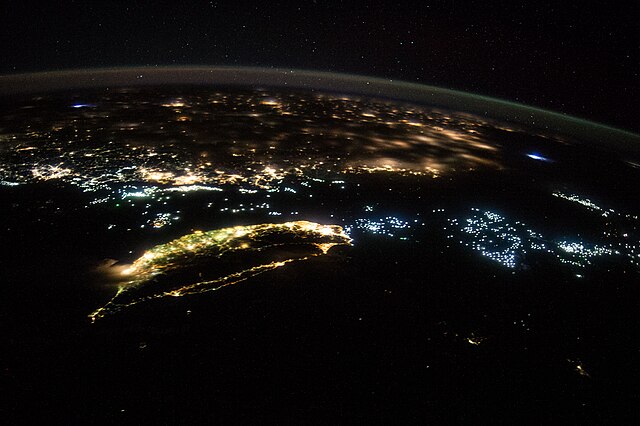The National Aeronautics and Space Administration (NASA) has sensationally captured the far reaches of fisheries on the South China sea.
Taken from the International Space Station on May 12, 2025, the telltale photo of dot-like fishing boats has rekindled remote fishing debates.
According to the Food and Agriculture Organization (FAO) in 2020, China leads the globe with 564,000 fishing vessels.
With such boating largesse, the space image has generated reactions ranging from thrill to ecological concerns.
Businessman Wang Chun, who recently led SpaceX’s “Fram2” mission to the earth’s poles, likened the dots to city light.
Chun also cited that the image implies both the best and worst of fishing times, paraphrasing the Victorian novelist Charles Dickens.
According to the Environmental Literacy Council (ELC) on May 4, 2025, China in current times overfishes and transgresses remote waters.
In the South Pacific, China competes with south seas islands, the United States, Samoa, Australia, South American countries, and Europe’s territories.
China in Argentina’s EEC
Indeed, Argentina keeps military patrols along its exclusive economic zone (EEC) to fend off Beijing’s trawlers.
CNN in March 2025 took aerial photos of shimmering glitter of China’s boats in Argentina’s seas paralleling the latest NASA panoramas.
Around 80% of just some 198 vessels that CNN identified were flying oriental colors. The rest were either from Spain, the overseas territories of the UK or Falkland islands.
Fishing some 200 miles south of Argentina, the entire vessel concentration occupied 150 miles from north to south.
Total Hauls
The remote south Pacific territories and South China Sea are playgrounds for annual hauls of millions of tonnes in live fish.
South China Sea alone provides an equivalent of 10% of the yearly fish tonnage of the developing world.
With over 5 million tonnes in fish cargo coming from this regional sea annually, China takes the lion’s share.
The South Pacific on the other hand is home to 44% of the world’s total fishery capture, per FAO’s 1996 data.
With Beijing offering full subsidies for vessels that can reach the global south, catches in the south Pacific are high.
So, NASA’s latest space photo evidence only underpins the expanding fisheries of China at home and far. The statistics below capture the bigger picture.
Statistics of China Fisheries
China holds about 15 to 20% of the world’s fish captures annually, as of 2022. This is double that of second place Indonesia and Peru, at 8% apiece. According to the European Council on Foreign Relations (ECFR), China’s fishing impetus picked up by 15.6% from 2005 to 2016. Its large fleet of trawling boats continued to grow amid falling catches in more recent years. The growth in boat count partially owes to governmental fishing subsidies, where 94% of the subsidies support energy costs.
How many fishing boats from China fish in remote seas?
Data by the China’s government is that 2,500 ships make it to Indo-Pacific waters while independent studies claim 17,000 boats. Comparably, the United States’ long distance boats number 300.
Where does China makes its largest fishing landings?
Around 15.2 million tonnes of fish land each year in China or up to 20% of the world’s catches. Much of the catches emanate from the South China Sea and the South Pacific. China claims about 80% of the South China Sea territory, which produces between 5 and 10.3 million tonnes of fish annually. This portion is equal to 10% of the developing world’s annual landings.
How high is seafood consumption in China?
China leads global seafood consumption by utilizing around 36% of the world’s yearly landings. The country therefore needs to either import or fish outside its sovereign waters to meet the significant domestic demand.
